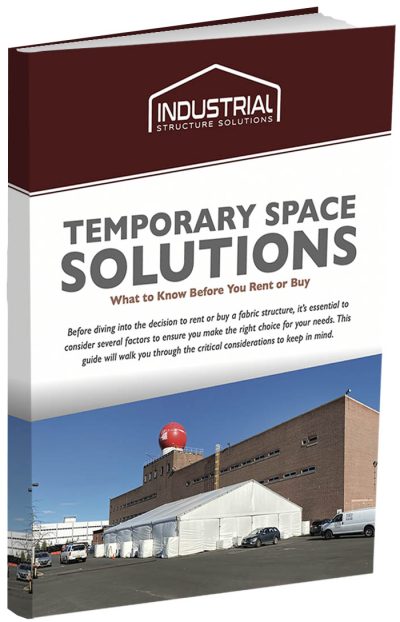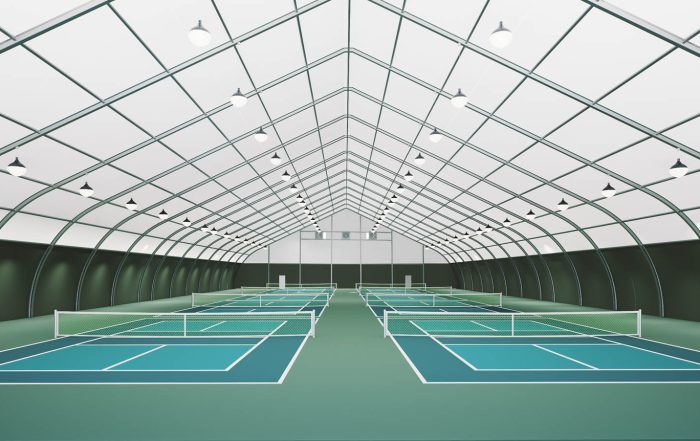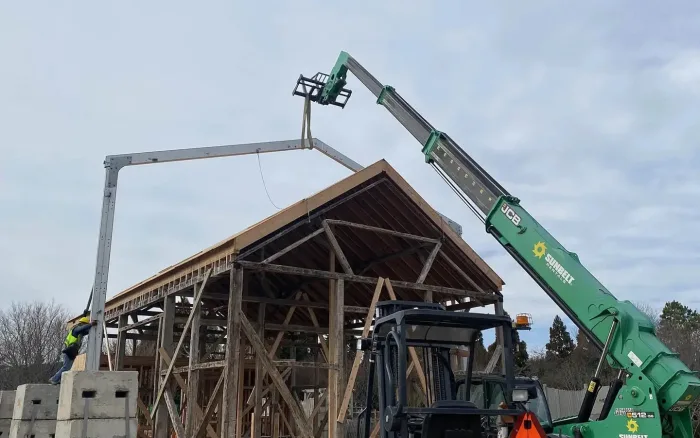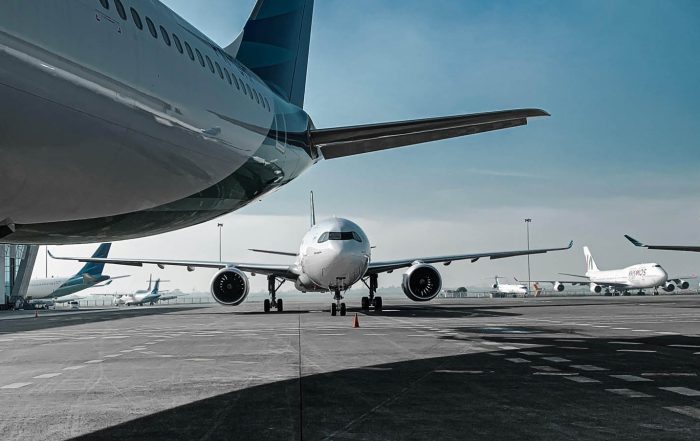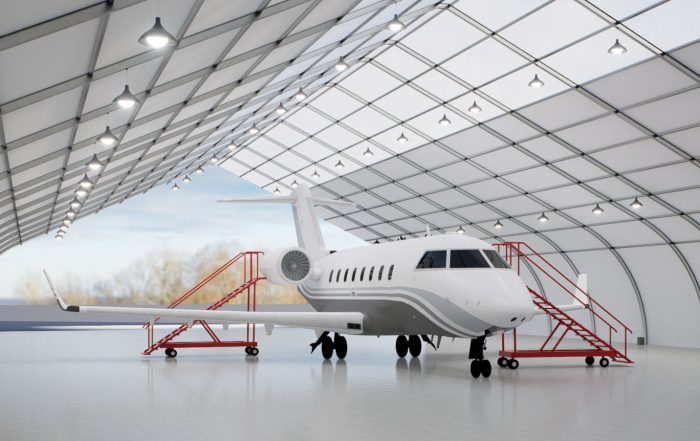The Future of Hangar Design: Exploring Tension Fabric Structures
In the world of aviation, the need for innovative solutions to enhance efficiency, safety, and space utilization is ever-present.
Hangars where aircraft are housed, maintained, and repaired, are evolving to meet these needs. A notable innovation is the incorporation of Tension Fabric Structures. These fabric buildings offer expansive, unobstructed space in short- and long-term applications.
These fabric structures epitomize spatial efficiency. In aviation hangars, the TFS design translates to an expansive area that can house multiple aircraft of various sizes. Without internal supports, maintenance crews can move freely, enhancing operational efficiency. Real-life applications include the housing of large commercial jets, military aircraft, and private planes, each requiring significant space for not just storage but also maintenance and repairs.
- Commercial Airports
TFS hangars can be customized to accommodate the diverse needs of commercial airports, housing multiple aircraft and providing ample space for maintenance and repairs. - Military Bases
The structures offer the flexibility needed for the varied and often rapidly changing requirements of military aircraft. - Private Jet Owners
The aesthetic and functional benefits of Tension Fabric Structures make them a preferred choice for individuals and corporations that own private jets. - Aircraft Maintenance Companies
These firms can benefit from the spacious, well-lit, and ventilated environment that clear span structures offer, ensuring a safe and efficient workspace. - Emergency Response Services
For services like air ambulances and firefighting aircraft, TFS hangars offer the quick access and egress required for rapid response to emergencies.
Flexibility and Adaptability
The aviation industry is marked by constant evolution, with new aircraft models of varying designs and sizes being regularly introduced. Because Tension Fabric Structures are highly adaptable and offer exceptional mobility, they can be reconfigured to accommodate these evolving needs. For instance, a hangar initially designed for small private jets can be easily adapted to accommodate larger commercial aircraft, thanks to the TFS structure’s flexible design. Furthermore, these structures can be moved to different locations without the need for disassembly and reassembly, making relocation both efficient and convenient.
Year-Round Functionality
One of the standout advantages of Tension Fabric Structures (TFS) is their exceptional ability to manage snow loads. Engineered with steeply angled roofs and resilient materials, these structures are designed to naturally shed snow, preventing accumulation. This feature is particularly vital in regions prone to heavy snowfall, ensuring the structural integrity and safety of the hangar. The engineering behind TFS not only enhances their durability in challenging weather conditions but also reduces the need for manual snow removal, making them a practical choice for year-round operations in colder climates.
Enhanced Crew Safety
In aviation, safety is paramount. Tension Fabric Structures contribute to this by offering unobstructed views and movement paths. The open space minimizes the risk of accidents during aircraft maneuvering. A real-life application is evident in military bases where quick response times are essential; the clear, open spaces ensure rapid deployment of aircraft without hindrance.
Cost-Effective Construction
These fabric buildings are durable and require minimal maintenance. In real-life, this translates to aviation companies being able to allocate resources to other essential areas like technology upgrades and staff training, rather than constant building maintenance. The energy efficiency of Tension Fabric Structures, facilitated by natural lighting and ventilation, also contributes to reduced cost.
Aesthetic Appeal
The sleek, modern design of Tension Fabric Structure (TFS) hangars is not just visually appealing but also offers a unique branding opportunity. Their exteriors can be custom-branded to align seamlessly with your corporate identity, transforming these structures into powerful marketing tools. This customization allows for a distinctive presence at any airport or aviation facility, making your brand memorable and visible. Furthermore, the aesthetic versatility of TFS hangars means they can be designed to complement the surrounding environment, enhancing the overall visual appeal of your operational space.
The integration of Tension Fabric Structures in aviation hangars is a testament to the industry’s commitment to innovation, efficiency, and safety. These structures are not just buildings but strategic assets that enhance operational efficiency, safety, and cost-effectiveness. As the aviation landscape continues to morph, adapting to the evolving needs of aircraft and the people who operate them, clear span structures stand out as a beacon of innovation and practicality, setting the pace for future developments in hangar design and construction.
Before diving into the decision to rent or buy a temporary structure, it’s essential to consider several factors to ensure you make the right choice for your needs. The handy guide below will walk you through a few critical considerations to keep in mind.
Fill out the form for instant access to the white paper:
Before diving into the decision to rent or buy a fabric structure, it’s essential to consider several factors to ensure you make the right choice for your needs. This guide will walk you through the critical considerations to keep in mind.
